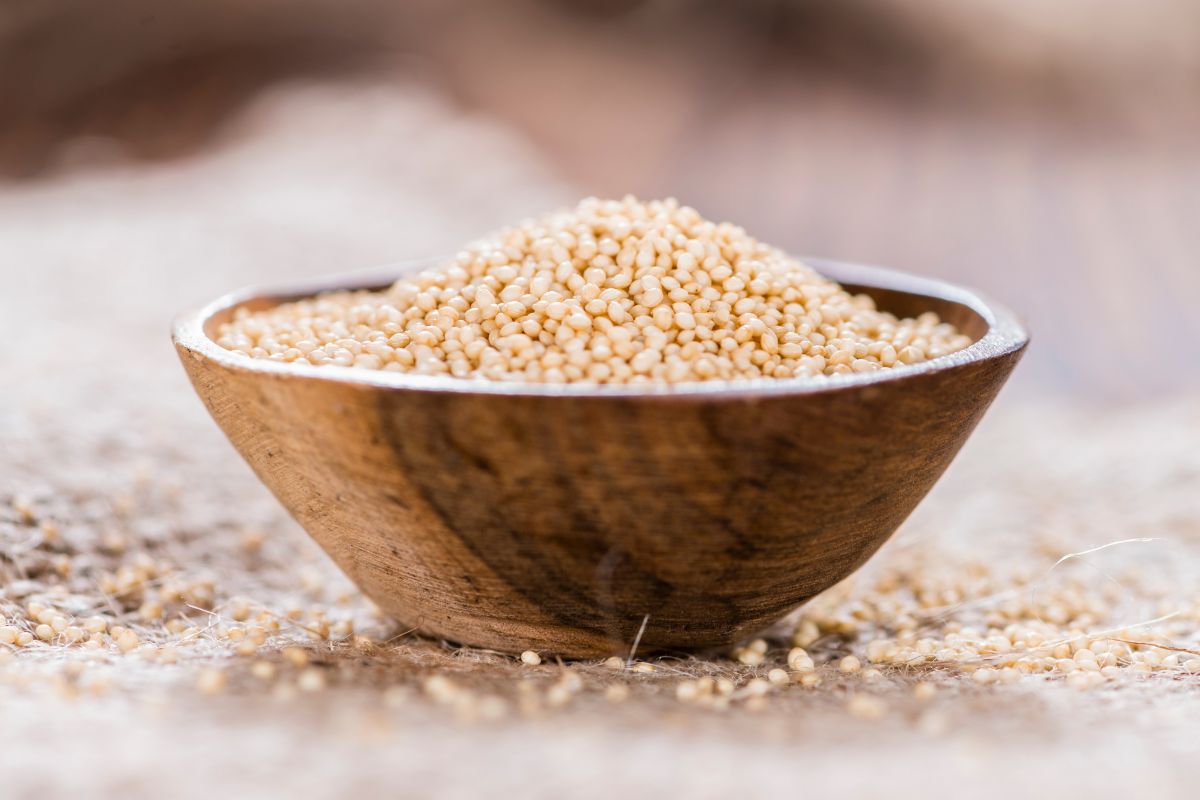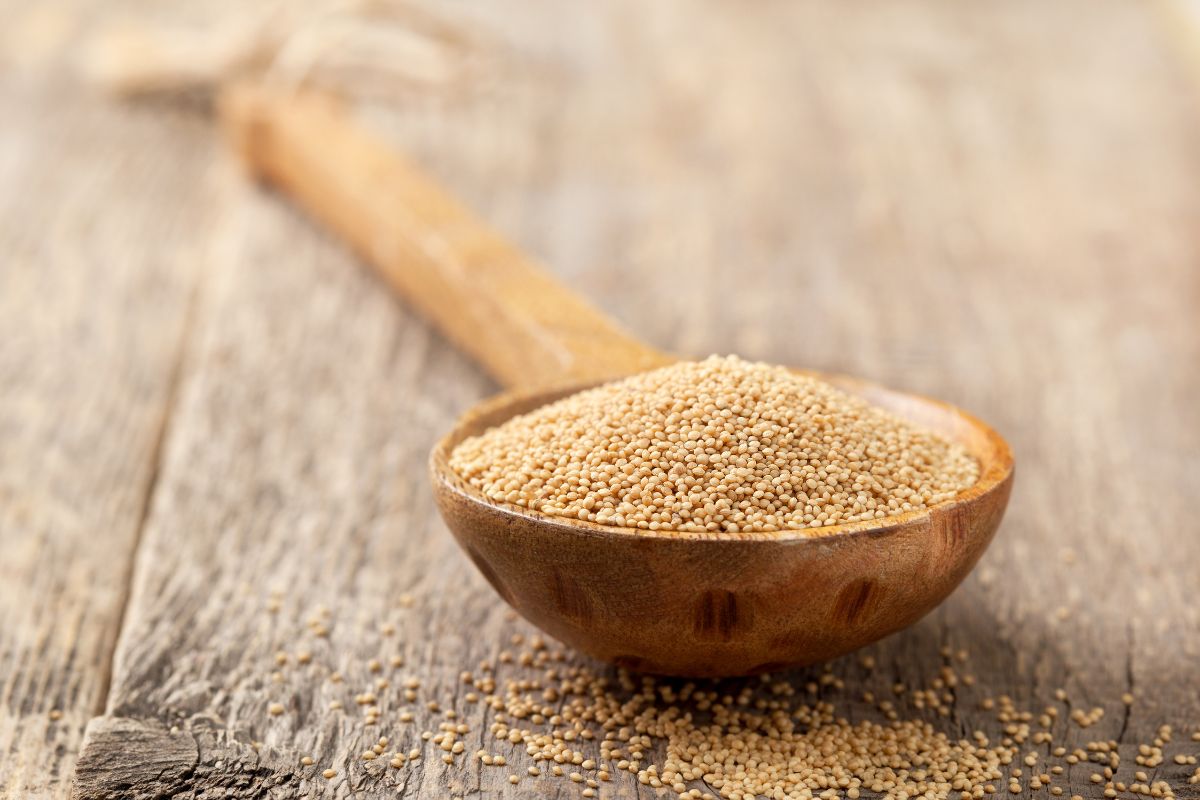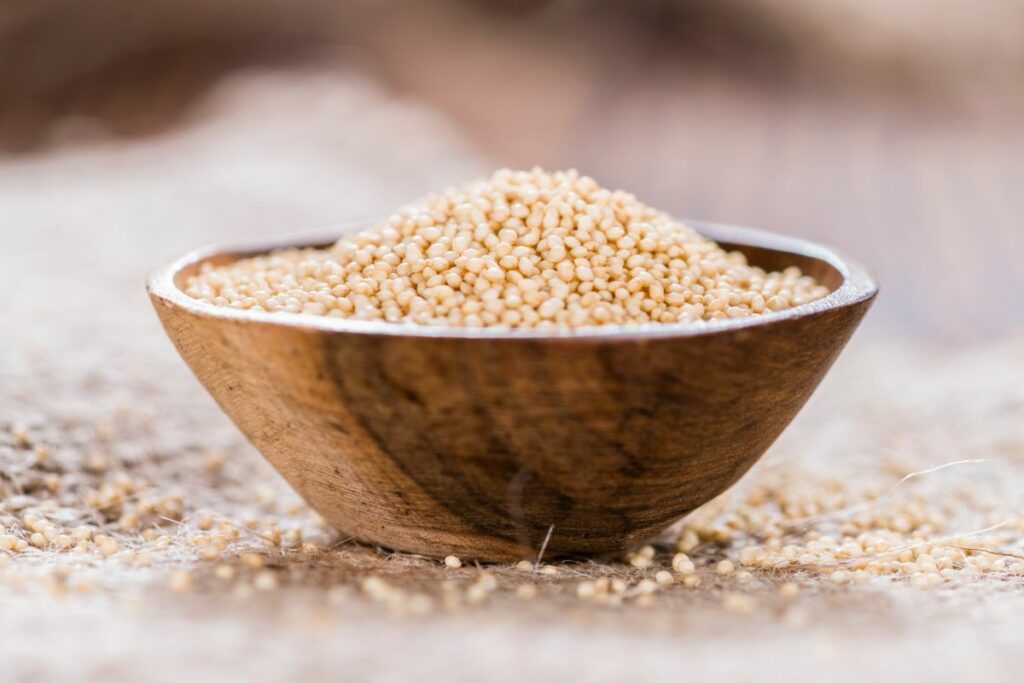If you have ever heard of amaranth you may be surprised to know it’s not a recently discovered ingredient. In fact it has been cultivated since the Aztecs.
Despite its storied history, people nowadays aren’t too aware of this super food. We’re here to fix that.

What Is Amaranth?
Similar to quinoa, amaranth isn’t actually a gain, it’s a pseudocereal. This means that it is plant seeds that are treated like grains.
Of the genus Amaranthus, only 3 of the 75 species are cultivable. Those being A. Caudatus, A. Cruentus and A. Hypochondriacus.
Amaranth plants can spread quickly so they are prime crops. Unfortunately because of its niche status, most countries see it as a weed rather than the bountiful harvest that it is.
What Does It Taste Like?
The general consensus is that it has a nutty and earthy taste. You can also find sweet and herbal flavors throughout.
When compared to other grains it has a unique flavor that many people find jarring the first time they try it.
It is recommended you soak your grains before you cook them in order to improve digestion and release its nutrients. This is especially true for amaranth.
Health Benefits
Amaranth has a plethora of health benefits and is a huge source of protein. It has a wealth of antioxidants that can help to prevent diseases. It also can reduce bad cholesterol while promoting good cholesterol.
Like other superfoods, amaranth is filled with all sorts of nutrients. Here is a list of some of them:
- Iron
- Magnesium
- Vitamin C
- B6
- B1
- B2
- Fiber
- Manganese
- Calcium
- Phosphorus
- Lysine
- Squalene
If all of those wasn’t enough, amaranth is also gluten free. Gluten free foods have been shown to reduce bloating and increase energy levels (If you’re feeling bloated, you might want to check out What Is Wheat Belly? here).
How To Cook It
Amaranth is actually a very versatile plant and can be cooked into pretty much any dish you can think of. Below we have listed some of the ways you can prepare it and what flavors amaranth works well with.

Boiling
The most obvious way to cook amaranth is boiling it like you would rice.
In order to cook it you need a 3:1 ratio of water to amaranth, it takes about 20 minutes over low heat for all the water to absorb.
Once boiled it forms a thick consistency which can then be crumbled to look closer to rice.
You could also leave the texture as it is and make a delicious porridge substitute. The slightly crunchy texture of amaranth brings a new experience to this age-old meal.
Due to its thicker consistency, it makes a good alternative to risotto rice or couscous.
When crumbled it makes a great topper to soups and salads. You can even add it into burritos and tacos to give them some extra nutrients.
If you really want to get creative then you can use amaranth to make patties. These versatile seeds can take burgers to the next level.
Complementary Flavors
- Amaranth works well in spicy food. So don’t be afraid to load up on cayenne pepper and chili flakes.
- Like similar grains, you can stuff bell peppers and mushrooms with amaranth for a healthy and filling meal.
- Fall fruits and vegetables like squash and carrots complement amaranth nicely.
Flour
Another popular use of amaranth is as a flour. Its richer flavor allows it to work well in loaf cakes and muffins.
Of course it is gluten free so you may have to mix it with whole wheat flour in order to get a cake-like texture. If you want to keep it gluten free, then you could try adding xanthan gum as a stabilizer instead.
As part of a gluten free blend, amaranth flour can be used to make pancakes, bread and cookies which are high in protein and are delicious.
Complementary Flavors
- Warming spices like cinnamon, nutmeg and ginger are ideal for baked goods.
- The earthy taste of amaranth will pair beautifully with a bitter coffee or sweet honey flavor.
- For fruit we recommend figs, apricots, pears and rhubarb to really bring out the amaranth.
Puffed
Amaranth is unique in that you can pop it like popcorn. It can be done with the same technique, however you don’t put a lid on the pot as you want to avoid steam build up.
This popped amaranth makes a delicious and healthy snack by itself, but it can be used as an ingredient to give a wonderful crunch to other snacks.
You can make crackers out of it for a light meal, make puffed bars for a sweet treat, or as a protein rich extra to your favorite energy balls. The choices are truly endless.
Complementary Flavors
- Seeds and nuts like poppy seeds, pumpkin seeds, and walnuts go great in non-baked goods.
- Amaranth’s earthy flavor pairs better with dark chocolate rather than milk chocolate.
- Coconut is amaranth’s best friend. From coconut flakes to coconut milk, it all goes brilliantly together.
The Leaves
With amaranth plants, it’s not just the seeds which are edible. The leaves of the plant are also healthy and delicious. You may see them be called amaranth greens or pigweed.
These leaves are closely related to spinach and it reflects in its flavor. In fact many people are calling these greens ‘the new kale’ because of its high nutritional value.
The leaves can be cooked in a manner of ways including steamed or stir fried. You can even eat the younger leaves raw like spinach.
As for serving, amaranth leaves can substitute basically any green. Stuff it in meat or top pasta with it, the choice is yours!
Complementary Flavors
- Onion, garlic and tomato go well with pretty much everything, including amaranth greens.
- For a meat choice we recommend a juicy pork loin.
- Since amaranth and spinach are closely related you know that feta is a great pairing cheese.








